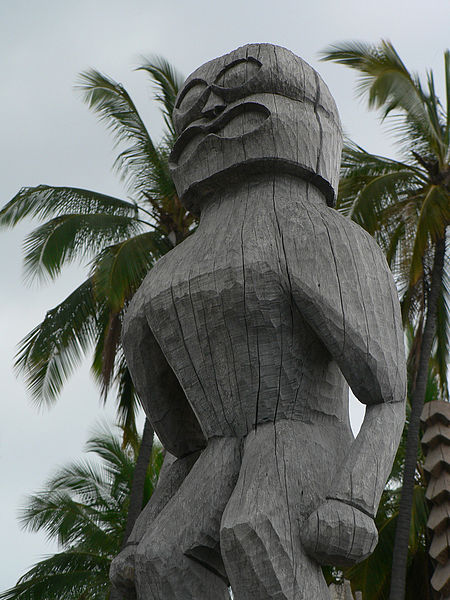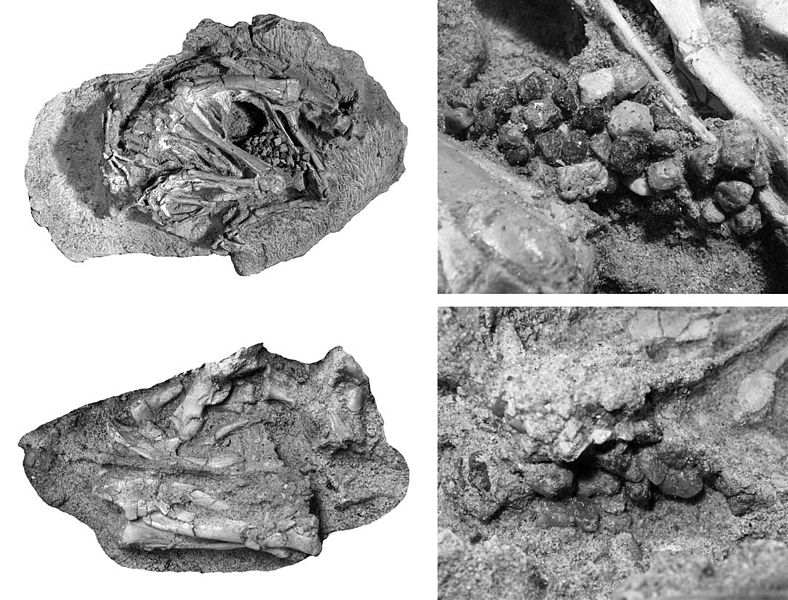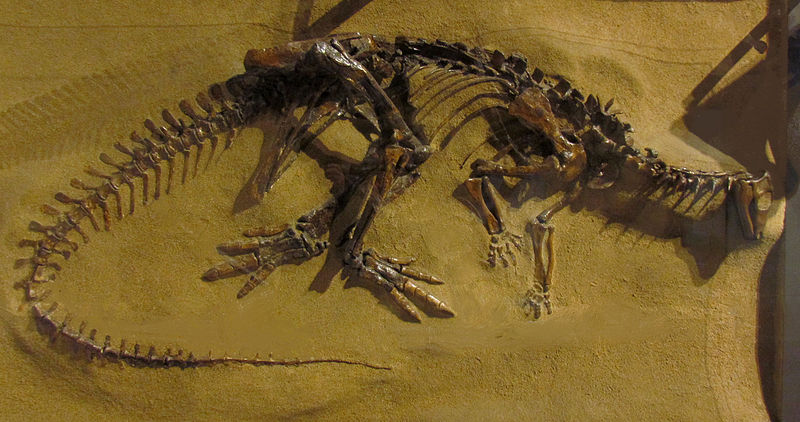Evolutionary biology is rife with great sound bites that have, usually for worse, been appropriated for social means- nature red in tooth and claw, survival of the fittest- and the unfortunate, bastardized corollaries of Social/Free Market Darwinism. Too often we are drawn into looking at the natural world through the lens of the hyper-competitive, exclusionary, kill or be killed, survival of the fittest paradigm. And no doubt these struggles exist, are readily observable, and play a role in the saga of life. But what often gets tossed aside, ignored, or simply ramrodded is the extent to which commensal relationships shape and motivate the interplay of species in a particularly nuanced fashion. And of particular importance to me in terms of both extinct and extant species is the concept of keystone species. For it is the presence of particular keystone species that most ameliorates the conditions for the maximum diversity and abundance of a multitude of other species.
Now I have shouted from the top of my little mountain in this small little corner of the interwebz that we need to pay attention to keystone species, past and present. My sister blog, southland beaver, is essentially a tribute to one of the most magnanimous keystone species of all time- Castor canadiensis- and how reintroduction of this rodent into Californian watersheds can, relatively economically, assist in everything from steelhead salmon restoration to flood control. And if keystone species are important in contemporary ecosystems, I do not think I am overstepping the bounds of rational thought to suggest keystone species in the past and particularly in dinosaur dominated ecosystems were also important. I have been critical at the lack of paleoecological studies that take into account commensal/keystone species concepts. Many of the more interesting topics in dinosaur ecology have to do with how do so many large animals coexist ecologically? The Kem-Kem of Africa, with its abundant theropods or Laramidia with its never ending diversity of large ornithischians are great examples. These ecosystems have perplexed people and most studies have focused on niche pertitioning as a way to reduce competition. But this is looking at these ecosystems through the guise of competition. Although less readily apparent, and some may argue impossible to tell from the fossil record, invoking commensal relationships and particularly keystone species concepts addresses these problems more succinctly I believe. For Laramidia, as I have argued here, ceratopsids were the keystone species due to their ability to fell and clear forested areas lowering the browse height for other dinos and turning over nutrients quickly. In the Kem-Kem I argued here that spinosaurids, due to their superior fishing abilities, opened up opportunities for other theropods through klepto-parasitism, scavenging, and as prey.
But in this post I want to talk about not an animal but a plant that acts as a keystone species, Dicranopteris linearis- the Old-World Forked Fern or Uluhe. And I also want to muse a bit about how this plant, or uluhe- may offer insight into Mesozoic ecosystems as the fern family it belongs to, Gleicheniaceae, was particularly abundant and widespread through the Mesozoic.
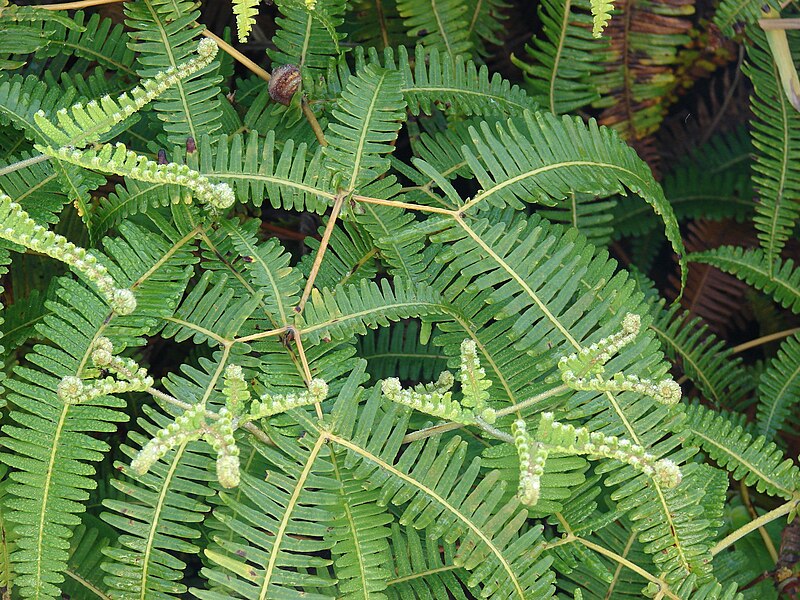 |
| Dicranopteris linearis. Forest & Kim Starr. Wiki Commons |
Ulehe is a little unusual for a fern because it requires full sun, if it is too completely shaded by high canopy it will diminish and die. As such it grows in newly cleared/disturbed areas such as roadsides, forest clearing, landslides, fire damaged areas and even lave fields. While spore germination is likely the primary method of colonizing newly disturbed areas, once the fern is established it quickly spreads through rhizomatous growth and aggressive shoot growth. These shoots, which can reach 6 meters in length, grow long initially to cover as great an amount of area as possible and the secondary fiddleheads emerge from side growths along the length of the shoot. This habit of growth also allows the fern an ability as a climber as well. All together this rapid colonization and monopolization of forest clearings is akin to a vegetative "blitzkrieg" forming immense fern thickets up to 3 meters thick. Not only that but after establishment the leaves and stems quickly die but are slow to decompose, even in wet and hot Hawaii. A dense mat of slowly decomposing dead fern substrate/forest detritus prevails allowing the ferns own rhizomes and roots to spread through it. The fern has also been suggested to have some allelopathic characteristics, preventing the germination of seedlings within its fern thicket network.
Ok, so we what we have here is basically an ecological pioneer species in forest succession. A lot of competition/exclusion going on here- how does this plant serve the forest community as a whole? How is it a keystone species?
Well the key role that the fern serves, remember it only grows in full sun, is that by monopolizing recently cleared areas it serves to prevent pioneer exotic species of plants from getting a toehold in these pivotal areas. This notion if corroborated by the observation that where the fern has been eliminated, invasives have made inroads into the larger native forest ecosystem.
But the Hawaiian islands are the most remote landmasses on earth, the only reason invasives are a problem is because of man. And I am not just talking western man, Polynesians brought their own grab bag of non-native flora and fauna to Hawaii. True, but this gets into a larger debate on is man part of the natural world or separate? Well I tend towards the belief that man, although often psychologically removed from the natural world, is still part of it. And if you step back into the larger scope of geologic time, if you go back in the paleoecological history of all species- at one time or another in their lineage they were an invasive species at some time/place. Following from this, the invasives of today- spread by man or not- will be the natives of tomorrow somewhere in the geological future.
But the point to remember here is that the unique and diverse flora of Hawaiian tropical forests- once established- has been maintained by the uluhe fern.
So what does this man for Mesozoic times? Well as mentioned earlier Gleicheniacean ferns were particularly abundant and diverse during the Mesozoic. If they had similar adaptations to modern forms, which is a good probability, then it stands to reason that they may have served similar functions. Perhaps in addition to colonizing talus slopes, they colonized land cleared by particularly rambunctious herds of titanosaurs or iguanodonts? And that these fern thickets served as particularly useful hiding/ambush sites for even very large dinosaurs? Recall that uluhe forms thickets 3 meters tall, with detrital substrates up to 1 meter thick. Now I have always been particularly outspoken on the tendency of paleoartists to conveniently place dinosaurs on exposed plains for maximum visual framing. I get it, people want to see the dino in full visual glory, except that once you start looking at how often this style is repeated- it starts to provide a bit of a disservice as to how modern animals use and move through vegetation.
 |
| Indian One Horned Rhino. Kaziranga Park India. Wiki Satish Krishnamurthy |
When I think of dinos moving through gleicheniacean fern thickets I am reminded of large mammals moving through elephant grass in places like Kaziranga park in India. Fully grown rhino, elephants, and water buffalo can disappear seamlessly into the 3-4 meter tall elephant grass. Large dinosaurs would have behaved much the same in Mesozoic fern thickets. While large herbivores likely foraged and hid in these thickets, theropods-especially large ones- may have found them particularly useful as ambush sites.
I recall a documentary I saw on cassowaries once, don't recall name of it presently, and the one scene that leapt out at me was one of a cassowary scrambling up a near vertical, highly vegetated hill side. With only two legs and no grasping appendage this bipedal land bird left the pursuing human in the dust- who had not the slightest clue as to how to navigate the difficult terrain. It was startling how easily the cassowary put up distance. Ok, now let's take this observation of a modern theropod in difficult, thickly vegetated terrain and do a little Mesozoic thought experiment.
Pushed out by it's larger brethren from the lowlands the teenage albertosaur had settled in this mountain valley in the Laramidian highlands. At about 2000 meters the winters were cool but not frigid, a little bit like the Malaysain highlands, vegetation was dense and the larger herbivores were rare- but they were too large for the 15 foot, 1000 lb predator to tackle anyways. More importantly larger tyrannosaurs, including those of his own species who would just as soon predate on him as steal his kills, were basically absent. Through much of the year pickings were slim for the predator- a pachy here or there, an unwary smaller theropod or even a smaller albertosaur snagged occasionally. But the albertosaur had remained because at least during a few months of the year, what you might call the Fall season, hunting was exceptionally good. And this is when the ginkgo trees were in mast.
Growing only at these higher elevations the gingko trees when fruiting attracted a multitude of dinos to consume the stinking fruits seasonally. But by far the biggest emigrant to the mountain valleys were numerous bands of Struthiomimus altus. Now the young albertosaur had learned through trial and error that these ornithomimids were a particularly hard catch. Excellent vision and group foraging strategy meant they were almost impossible to stalk. And even if you did sneak up close to one they were more maneuverable and just as fast as the theropod. And now that the young albertosaur was getting bigger it was slowing down so any speed advantage was becoming a wash.
But the young albertosaur had learned of a particular spot where it had a distinct advantage. The most productive mountain valley narrowed down into a 50 meter draw and in order to enter the valley one had to negotiate this draw. In addition to being narrow this draw was highly disturbed by landslides and seasonal flooding. So much so that trees could not get a good toehold but instead vast thickets of gleichenaceous ferns dominated growing 4 meters high with a thick miry substrate of decaying vegetation.
So here in this particular microhabitat our young albertosaur would set up ambush after ambush. In the thick vegetation the speed and maneuverability of the ornithomimids were neutralized and the larger albertosaur, being absolutely taller in leg and stature than the ornithomimids, actually had a distinct advantage. It was actually able to walk over and through the thick vegetation more easily than the smaller ornithomimids- who sometimes got mired in the tangle of growth. In this manner, during the gingko mast, the young albertosaur hunted efficiently and easily during several months of the year dining on intrepid ornithomimids and eventually growing large enough to move down to lower elevations and dine on larger dinos.
So, long story short, pay attention to them ferns- especially Gleicheniales- as they may offer unique insight and context to dino mediated Mesozoic ecosystems. And for any paleoartists out there put more of these ferns in your art- they offer a lot of unique patterns, angles, and textures in their growth. Go here to look at some examples. And if you want to go further on Mesozoic ferns I have some links below to pertinent papers.
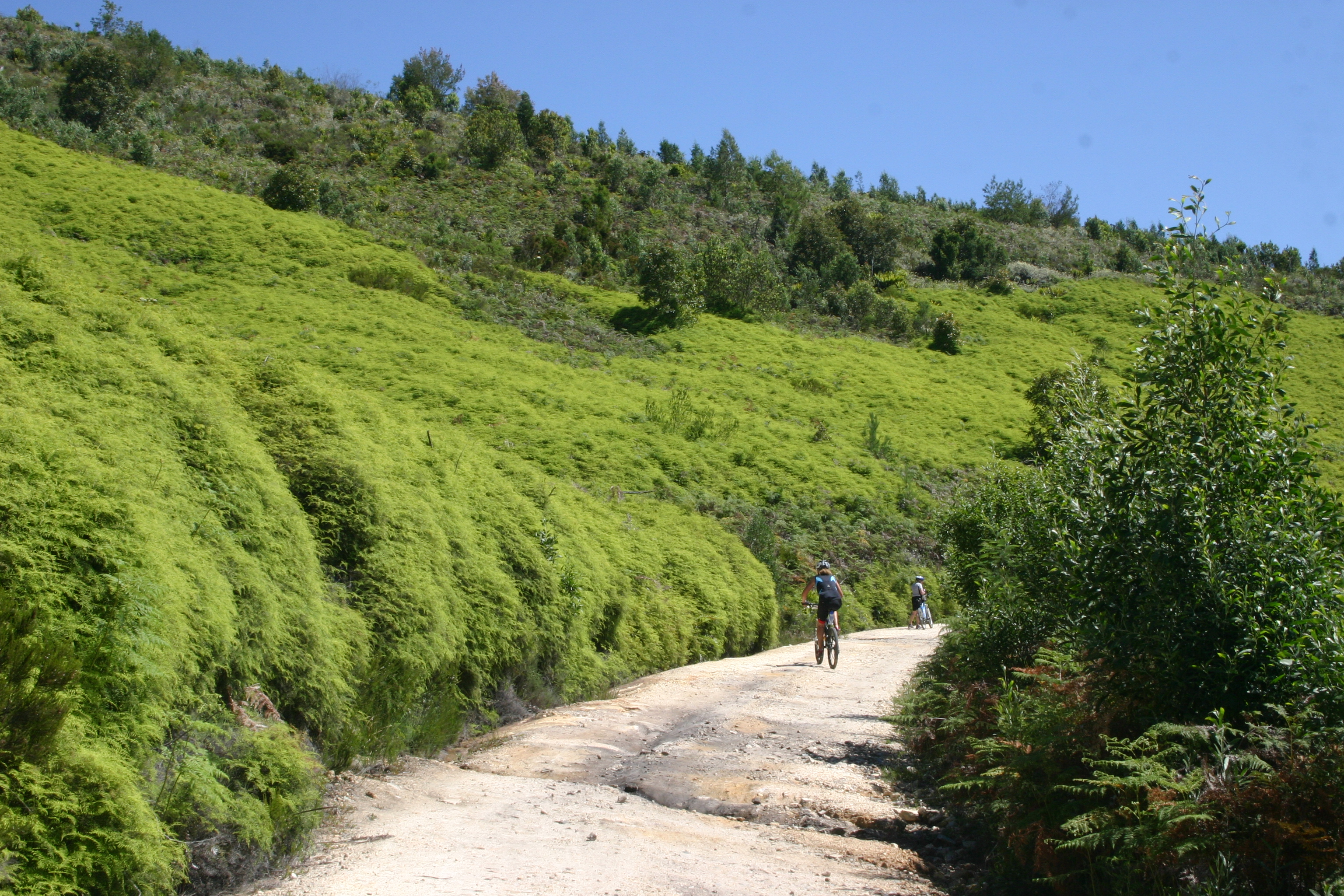 |
| Gleichenia polypodiodes. Africa. wiki. Paul Venter |
Pertinencia
Biodiversity and the Reconstruction of Early Jurassic Flora from the Mecsek Mtns (S. Hungary)
Early Cretaceous Gleicheniaceae and Matoniaceae (Gleicheniales) from Alexander Island, Antarctica
Ecology of the Early Cretaceous Ferns of China
Ecology of Some Late Triassic to Early Cretaceous Ferns of Eurasia
Fern Ecological Implication from the Lower Jurassic in Western Hubei, China
Ferns in an Angiosperm World: Cretaceous Radiation into the Epiphytic Niche and Diversification on the Forest Floor
Floral and Environmental Gradients on a Late Cretaceous Landscape
Fern Spore Diversity and Abundance in Australia During the Cretaceous
Support me on Patreon.
Like antediluvian salad on facebook.
Watch me on Deviantart @NashD1.Subscribe to my youtube channel Duane Nash.
My other blog southlandbeaver.blogspot.
